What is greywater?
Household wastewater or 'greywater' comes from household or personal activities such as:
- kitchens (sinks and dishwashers)
- bathrooms (including showers, hand basins, baths, spa baths but excluding spa pools)
- laundries
- facilities servicing staff, employees and residents in institutional, commercial and industrial work places.
Household waste does not include:
- commercial waste
- industrial waste
- large-scale laundry activities
- any storm water flows
Untreated greywater characteristics
The quality of greywater can vary greatly. This is due to factors such as:
- the number of household occupants (their age, lifestyle, health)
- water source and
- products used (such as soaps, shampoos, detergents).
Greywater can contain:
- Disease causing organisms (bacteria, enteric viruses, helminths and protozoan parasites).
- Chemicals from soaps, shampoos, dyes, mouthwash, toothpaste, detergents, bleaches, disinfectants and other products (such as boron, phosphorus, sodium, ammonia and other nitrogen bases compounds).
- Dirt, lint, food, hair, body cells and fats, and traces of faeces, urine and blood.
Good management practices and sensible use can reduce risks presented by these contaminants.
Manual bucketing greywater
Managing health risks
- Don’t use greywater from washing clothes soiled by faeces or vomit (e.g. nappies).
- Don’t store untreated greywater for more than 24 hours. Bacteria and organic contaminants in greywater will cause it to turn septic and produce strong and offensive odours.
- Don’t use greywater if others in the household have diarrhoea or an infectious disease. This can increase the risk of other people becoming ill.
- Don’t use greywater to water fruit, vegetables or areas where fruit can fall to the ground and be eaten.
- Avoid splashing greywater and make sure you wash your hands before eating or drinking.
- Keep children and pets away from areas watered with greywater, until it has soaked into the ground.
Managing environmental risks
- Use shampoos, detergents and cleaning products that contain low levels of boron, phosphorus and salt. Boron can be toxic to plants. Some native plants are sensitive to phosphorus, while sodium and other salts can damage soil structure. A useful website that contains information on laundry products is Lanfax Laboratories.
- Washing machine rinse water has lower concentrations of detergents, compared to wash water. Only use rinse water from washing machines.
- Bleaches and disinfectants can kill beneficial soil organisms and damage plants. Avoid using greywater containing harsh chemicals or bleaches, or after washing out hair dye or paint products.
- Greywater tends to be slightly alkaline and this can be harmful to acid loving plants such as azaleas and camellias.
- Rotate greywater application. Rainwater or mains water will help to flush salts from the soil.
- Prevent pooling and runoff of greywater onto other properties, into watercourses and the storm water system. Pooled greywater can turn septic and produce offensive odours.
- Don’t over water your plants. Plants are susceptible to waterlogged soil.
- Monitor areas watered with greywater. If there is visual evidence of damage to plants or soil, you need to change watering practices. Try a different or larger area, or reduce the amount of water used. Clay soils tend to be more susceptible to build up of salts and have low permeability. Take extra care when using grey water in areas of clay soils to avoid long term damage.
Permanent greywater systems
Permanent greywater systems such as diversion devices or treatment systems, or any device attached to plumbing, can increase the use of greywater. However, due to potential risks associated with greywater, permanent greywater diversion devices and treatment systems require authorisation in accordance with the requirements of the Plumbing Code of Australia. Read the Guide to domestic greywater re-use June 2017 (PDF, 5.0 MB)
You require plumbing permits from your council before installing any of these devices or systems.
Unauthorised diversion devices such as direct hose connections on washing machines and waste pipes or permanent diversion of untreated greywater is not permitted.
Repairs and maintenance
Maintenance and repair work on a greywater treatment system is notifiable work. Your licensed plumber will notify the Plumbing Permit Authority (Council) when work is complete.
Domestic greywater treatment system (DGTS)
DGTS is a system or device that collects, treats and disinfects domestic greywater for re-use. Some examples of water re-use include:
- toilet or urinal flushing
- supply of cold water to an automatic clothes washing machine
- garden irrigation as permitted by the regulatory authority
- car washing as permitted by the regulatory authority.
Note: Subject to Council approval
Technical related information
- Guide to domestic greywater re-use June 2017 (PDF, 5.0 MB)
- AS/NZS Onsite Domestic Wastewater Treatment units - Part 4: Domestic greywater treatment systems
- Fact Sheet - Manual bucketing greywater (PDF, 171.1 KB)
- Rainwater storage tanks
Search for a licensed plumber
Search now to find a plumber licensed to operate in Tasmania
This page has been produced and published by the Consumer Building and Occupational Services Division of the Department of Justice. Although every care has been taken in production, no responsibility is accepted for the accuracy, completeness, or relevance to the user's purpose of the information. Those using it for whatever purpose are advised to verify it with the relevant government department, local government body or other source and to obtain any appropriate professional advice. The Crown, its officers, employees and agents do not accept liability however arising, including liability for negligence, for any loss resulting from the use of or reliance upon the information and/or reliance on its availability at any time.
